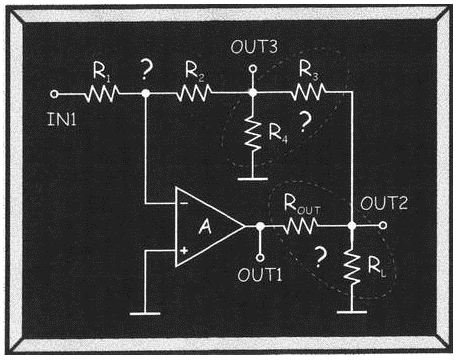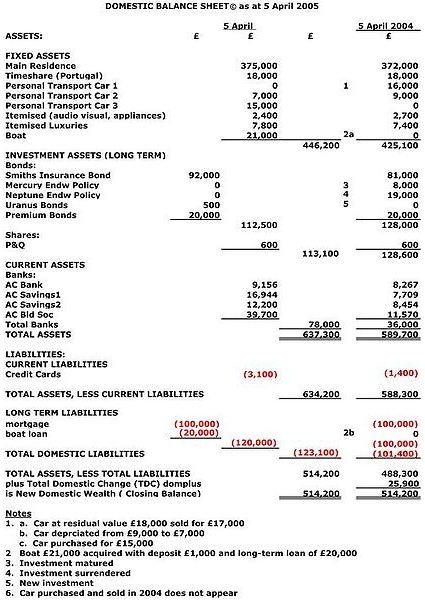An Accounting Guide to the Balance Sheet
When you first decided to become an entrepreneur you most likely thought about your product or service, how you would market it, sell it and make a profit. Once the doors to your business were open, you then discovered you needed to learn all about your finances, including all the ins and outs to financial statements such as the balance sheet.
A balance sheet doesn’t just contain made-up numbers listed on the asset and liability side, those numbers come from your day-to-day journal entries where everything coming in or going out of your business is tracked.
Bright Hub takes the mystery out of the balance sheet and offers some great tips, advice and tools you need to be informed on the financial condition of your business.
Balance Sheet Basics
They say the balance sheet is a snapshot of your business at any given moment in time. Sure, that’s one explanation, but what does it truly mean? A balance sheet shows all of your assets, liabilities, and owner’s equity to help you calculate your business net worth—that’s also a mouthful!
Here at Bright Hub, we wanted to offer all small business owners working with their tax professionals an easier way to understand the ins and outs of the balance sheet, how it’s prepared and why a balance sheet only shows a summary of accounts. The summary accounts on your balance sheet are comprised of many sub-accounts pulled from other financial statements such as your income and expense statement via the journal entries made to your general ledger.
Our first collection of posts offers the basics behind a balance sheet, including a free template you can download and tips on how to reconcile a balance sheet. If you’re just starting a new business, we also offer the best ways to estimate your opening day balance sheet—a must for not only your business plan but also to attract lenders and investors.
- What is a Balance Sheet?
- Free Balance Sheet Template
- Classified Balance Sheet Template
- Subcategories for Classified Balance Sheets
- Reconciling a Balance Sheet
- Sample Balance Sheet Reconciliation
- Intro to Balance Sheet Identity
- Estimating an Opening Day Balance Sheet for New Business Owners
- How to Prepare a Balance Sheet
Interpreting the Balance Sheet

Now that we’ve covered the basics, how do you go about interpreting the balance sheet or even read it for that matter? Did you know a balance sheet can be easily manipulated or incorrectly calculated via posting errors? We’ll discuss how to avoid this and how and why it can happen in the first place.
Learn the fundamental accounting equation all balance sheets contain, how your net worth is calculated and where it’s revealed.
- How to Read a Balance Sheet
- What’s Hiding Between the Lines in a Balance Sheet?
- Fundamental Accounting Equation and the Balance Sheet
- Net Worth and the Balance Sheet
Financial Statements, Assets and Liabilities
There are other financial statements attached to your balance sheet such as the income and expense statement which ultimately shows you profit (or losses). When it comes to assets, do you understand the difference between tangible and intangible assets? If not, we’ll explain them in-depth and also teach you more on owner’s equity, deciphering long-term liabilities and the best way to handle them. Finally, to learn more about summary accounts on the balance sheet, we explore the income and expense statement with a free template you can download.
- What’s the Difference Between a Balance Sheet and an Income Statement?
- How Debt Financing Affects the Balance Sheet
- Understanding All the Assets on Your Balance Sheet: Tangible vs. Intangible
- What Are Long-Term Liabilities?
- Owner Equity on the Balance Sheet
- Exploring the Income Statement
- Free Income Statement Template Download
Where the Numbers Come From

As we said above, the summary accounts on your balance sheet come from somewhere, but where? In this next collection in our guide to the balance sheet, we’ll teach you about the general ledger and how journal entries are recorded and then pulled to those summary accounts. If you need to keep track of certain asset and liability accounts, we’ll explore the world of scheduled and controlled accounts which show more detail.
Fixed assets on your balance sheet also show depreciation, so you’ll need to learn how that depreciation is determined and what types of depreciation methods are best to use. Learn why your net income is not the same on the balance sheet as cash in your bank account, and finally, we’ll walk you through the most detailed of all financials—the trial balance including tips on preparing and making adjustments to your trial balance.
- General Ledger Posting Pulls to the Balance Sheet via Journal Entries
- Making Journal Entries
- Scheduling Asset and Liability Accounts for the Balance Sheet
- Depreciation of Fixed Assets on the Balance Sheet
- Depreciation Methods
- Why Your Net Income is Not the Same as Your Cash Flow
- What is a Trial Balance?
- How to Prepare a Trial Balance?
The Balance Sheet and Working Capital
Most balance sheet formats show your working capital (WC), but how is it calculated and are there guidelines to working capital? Here we talk about why WC is so important, including how to determine asset ratios and a very simple and easy to way to calculate your working capital. Having no working capital may often be the reason you can’t attract lenders or investors and, because these folks want to see your balance sheet, you’ll need to understand WC fully and accurately.
- Working Capital (WC) Guide: WC Appears on Your Balance Sheet
- Working Capital and Total Asset Ratios on the Balance Sheet
- Calculating Working Capital
Must Have Accounting Tools, Advice and Tips

Our guide to everything the business owner needs to know about the balance sheet would not be complete if we didn’t include some must have tools, tips and advice. We start out with a glossary of accounting terms in easy to understand language and take a more in-depth look at the different types of financial statements.
We also offer up a study guide on financial statements and teach you about the full accounting cycle and what happens if you don’t follow those GAAP rules.
We also offer advice on why some payments you receive aren’t always assets and the importance of inflation when it comes to the assets listed on your balance sheet.
Finally, we’ve got some accounting software reviews to help you make a smarter choice on which software package will work best for your small business and your tax professional.
- Glossary of Accounting Terms
- A Guide to GAAP – Generally Accepted Accounting Procedures
- Types of Business Financial Statements
- A Study Guide for Business Financial Statements
- Accounting Cycle Reference Guide
- What Happens when You Don’t Follow the Accounting Cycle?
- What Accounting Software Should You Choose?
- Are Payments Received Always an Asset?
- How Does Inflation Affect Your Assets?
As always, it’s Bright Hub’s goal to offer the most complete how to guides that are informative and helpful. If you have a balance sheet or financial statement question you can’t find the answer to here, drop us a comment and we’ll find the answer for you.
